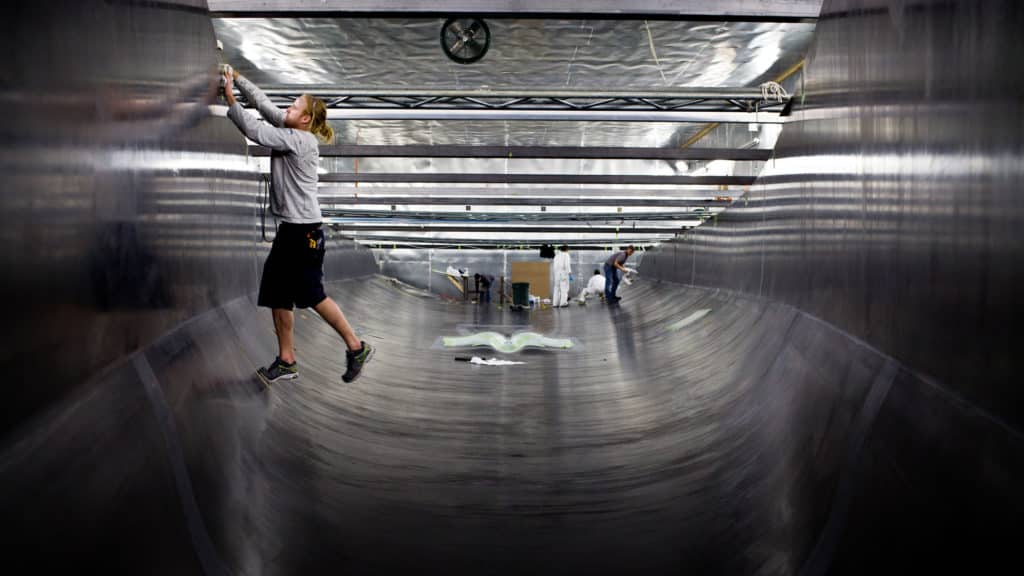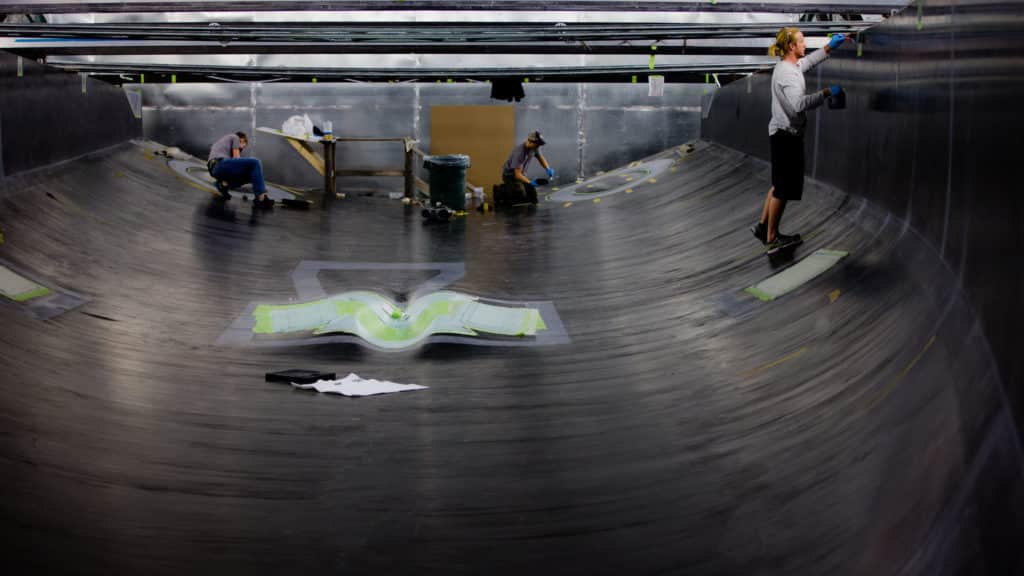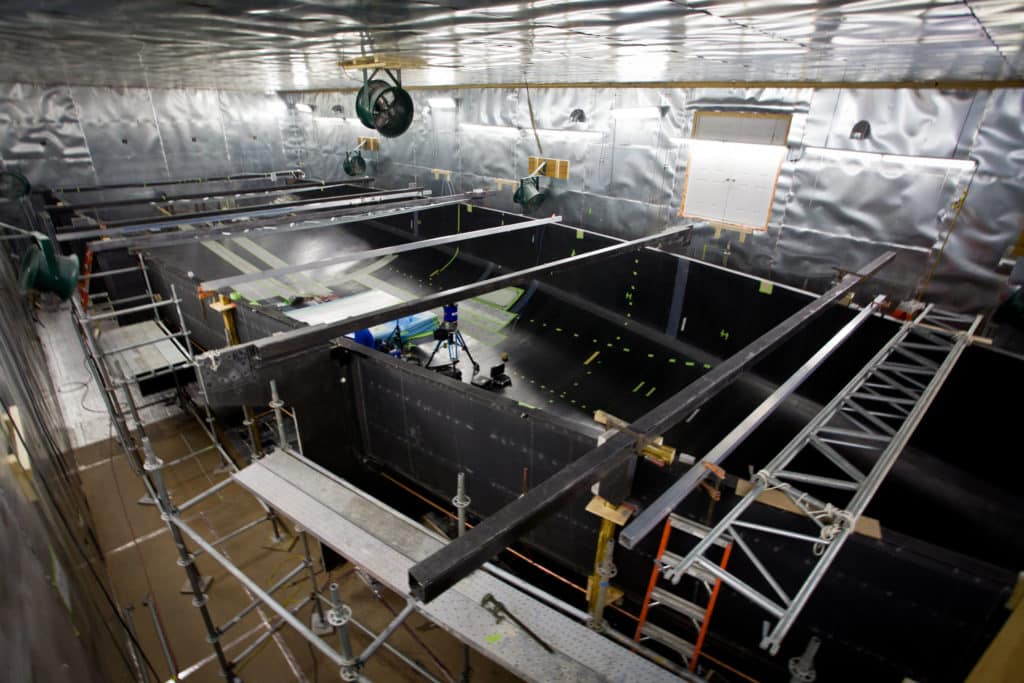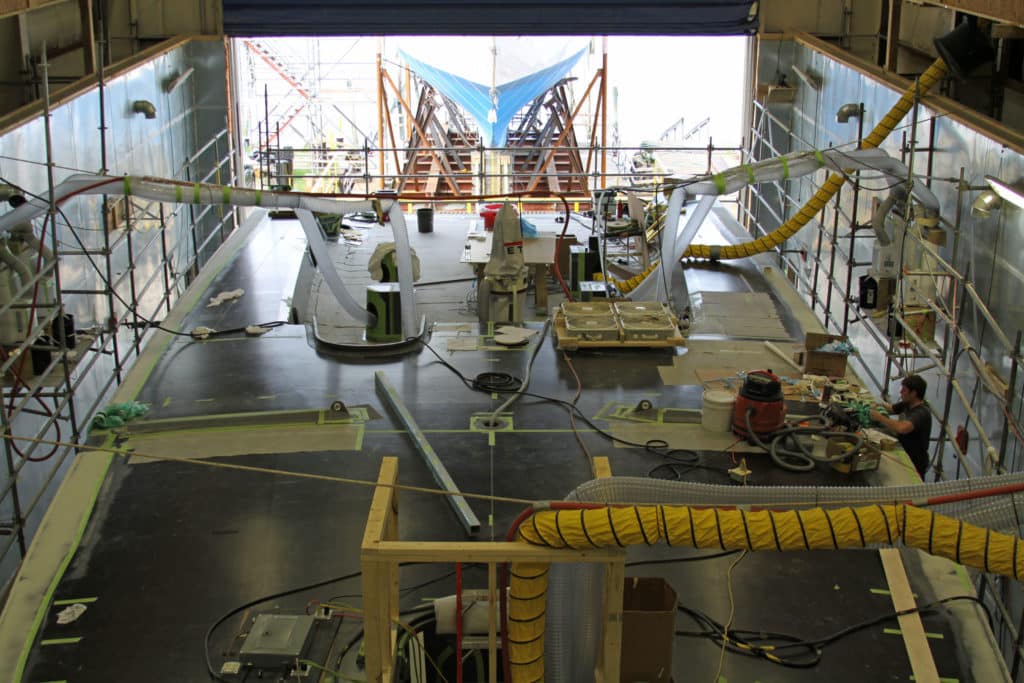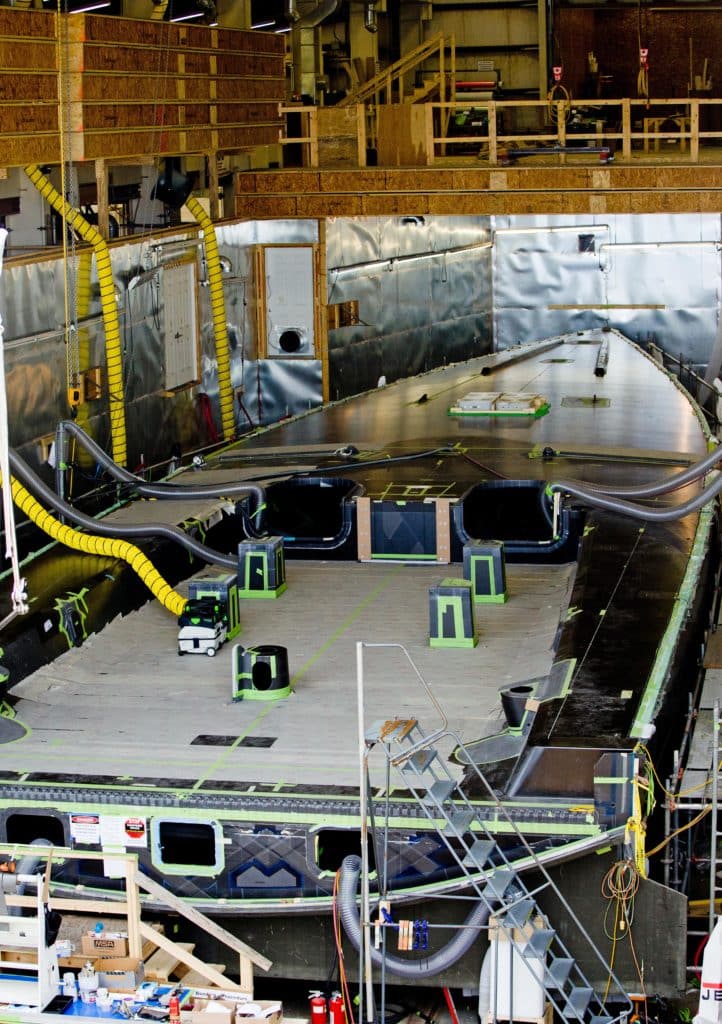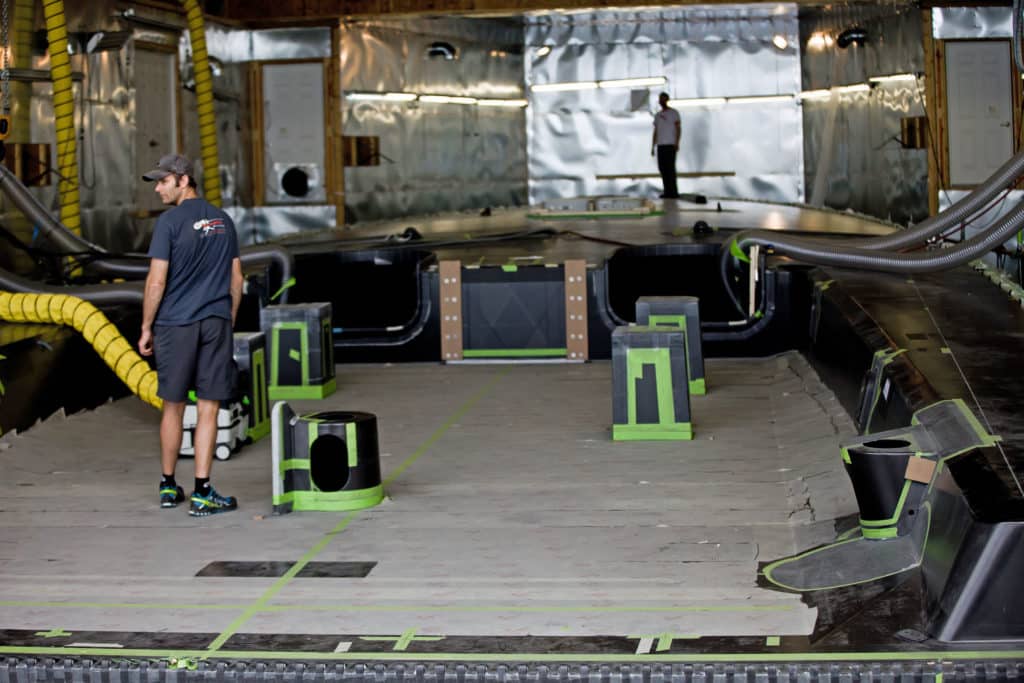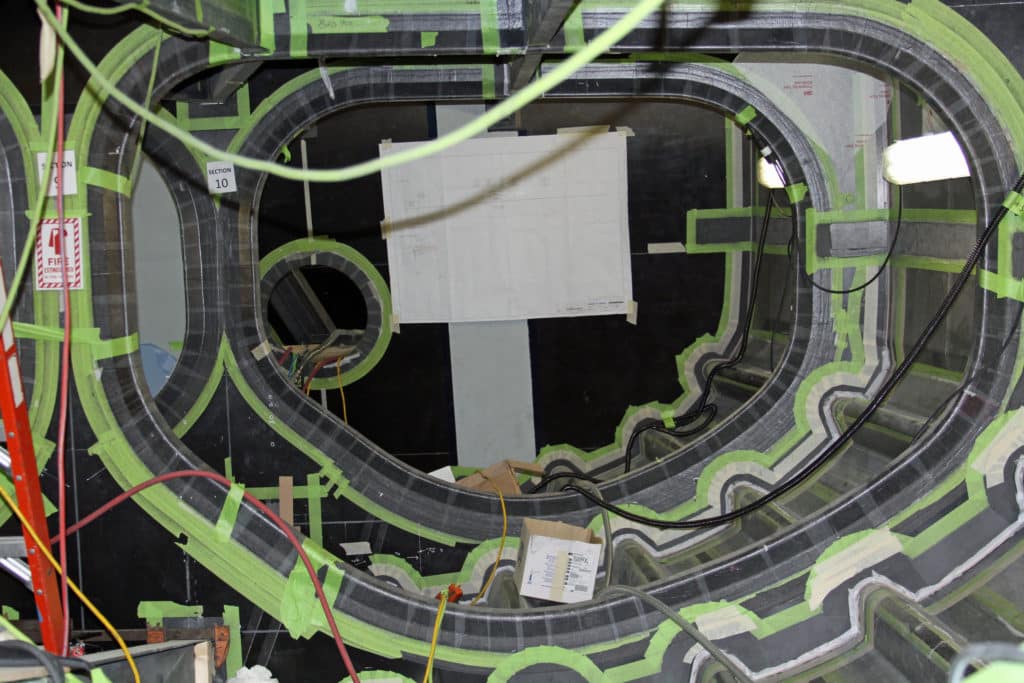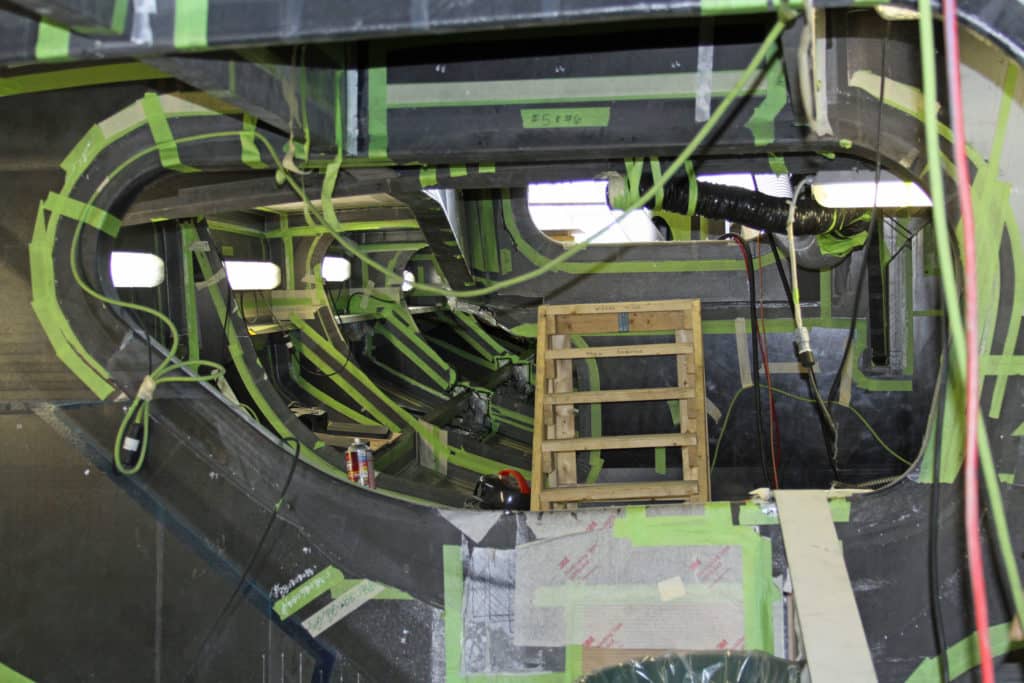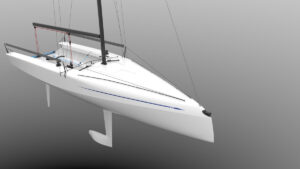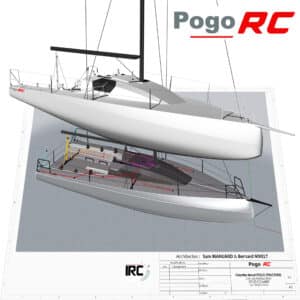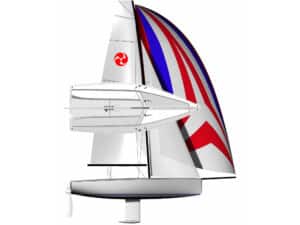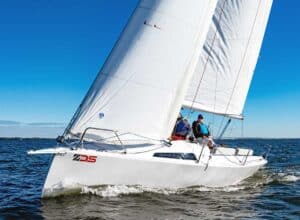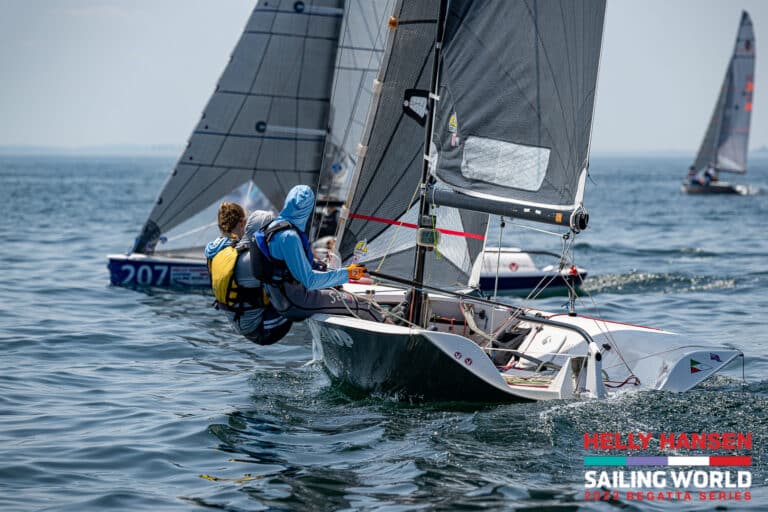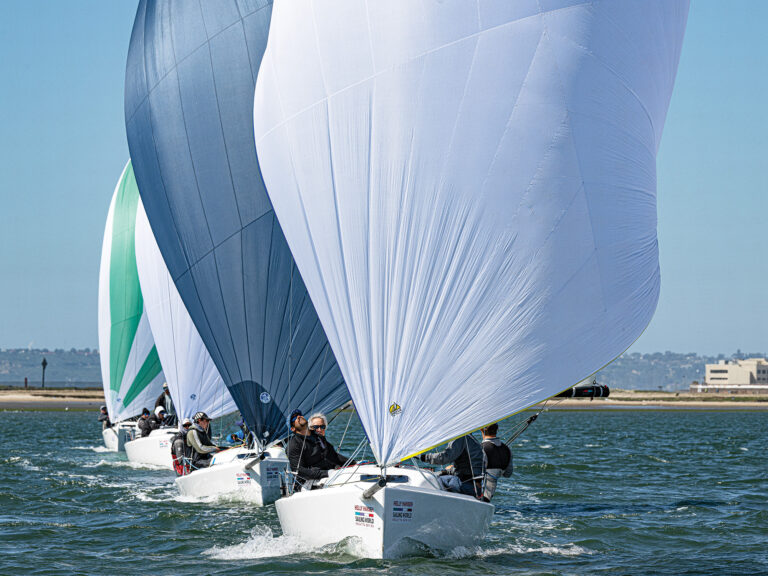Tim Hacket and Brandon Linton, both Australians, have been building racing yachts since they were apprentices at McConaghy Boats in the early 1990s. They’ve seen firsthand the expanded use of carbon-fiber in the construction of those yachts, and now they’re deep in the midst of one of the most complex builds they’ve ever undertaken.
The duo are respectively the project manager and build manager for Jim Clark’s new mega-speedster nicknamed “NewCubed” under construction at Hodgdon Yachts in Boothbay Harbor, Maine. They’ve built some impressive boats through the years, for America’s Cup and Volvo Ocean Race teams, and they’ve seen the use of carbon become more refined and detailed to maximize its potential and avoid catastrophe.
“It was easier working with carbon in the early days because its full range of engineered properties weren’t known then, so most things were overbuilt to allow a greater safety margin,” says Linton. “Nowadays, you can’t just lay up the fabric and cook it because the engineers are pushing the limits. Now it all has to be prepared perfectly.”
“Every time you cook a piece, however big or small, you have to follow the procedures exactly or it could lead to voids and problems,” says Hacket.
Measuring in at 100 feet LOA and 26 feet wide, “NewCubed” has a lot of carbon-fiber. The joined hull and deck have 8 tons combined of carbon fiber, Kevlar core, and pre-impregnated resin. The keel bulkhead alone has 1,000 square meters (10,763 square feet) of the black stuff. Much of that carbon has been laid over a Kevlar core varying in thickness between 30 and 40 millimeters.
“The designers prefer Kevlar for the core because of its properties; it has better sheer values when compared with Nomex,” says Hacket. “But it’s a little harder to work with and requires more prep time. When it arrives it has a fuzzy layer that needs to be sanded down before it can be bonded.”
Kevlar core, however, is absent in the hull sections forward of the keel. That area of the boat is monolithic carbon fiber measuring up to 7 millimeters thickness, and that is where the “NewCubed” project becomes more complicated for Hacket and Linton. They’re more accustomed to core throughout the yacht. But in an effort to save weight while maximizing hull strength, the designers, Guillaume Verdier and VPLP, have incorporated a design feature usually found in their IMOCA offshore yachts; many bulkheads and hull stringers.
“For us, the monolithic bow sections are the best option for reliability and weight savings,” says Philibert Chenais, the design rep from VPLP who’s been on site for the past seven months. “The combination of the monolithic structure and stringers offers the best resistance to slamming and impact, and you also avoid the potential of core shear failure and skin delamination.”
“NewCubed” is strengthened with 16 bulkheads, 15 internal (the forward two of which are watertight) plus the transom, and 12 stringers along the hull, some as long as 52 feet. All of which is necessary because “NewCubed” is going to generate some massive loads:
• The boat has a righting moment of 140 to 160 tonnes (by comparison, the maxi trimaran Banque Populaire IV had a righting moment of 260 tonnes)
• The forward bearing for the canting keel mechanism has a designed working load of 681 tonnes
• The max load on the headsail sheets is estimated at 9.5 tonnes and the mainsheet at 14 tonnes
• The port and starboard longitudinal ballast tanks each hold 6.5 tonnes of water
• The aft water ballast tank holds 3 tonnes
• There are two 80-liter hydraulic oil tanks
“Being thinner than a sandwich, the single skin is obviously a softer shell, thus it needs more structure—bulkheads and stringers—to stiffen it,” says Chenais. “We estimate a weight savings of 200 kilograms (441 pounds) on this boat compared to a solution with a sandwich hull and less structure.”
“The French designers are different from the Anglo-Saxon designers we are used to working with,” says Linton. “How they’ve engineered the structure in the boat is different from anything we’ve seen.” Impressively, Hacket and Linton and their army of workers have gotten to this point in fewer than 12 months. The design concept for “NewCubed” was floated last spring; Hacket and Linton started doing mock-ups in June/July of 2013; they got the deck lines on August 1 and the hull lines on October 1. They hope to have the build completed by mid-September, and they’re currently managing 45 to 50 workers upwards of 12 hours per day, six days a week.
“One of the biggest challenges has been time,” says Hacket. “The lead time for the carbon fiber, for the steel keel fin, for the hardware suppliers. It’s all been a very tight time frame.” Time, however, is a luxury they don’t have. The boat’s first appearance, the Rolex Sydney Hobart Yacht Race, is scheduled for December 26 in Australia.
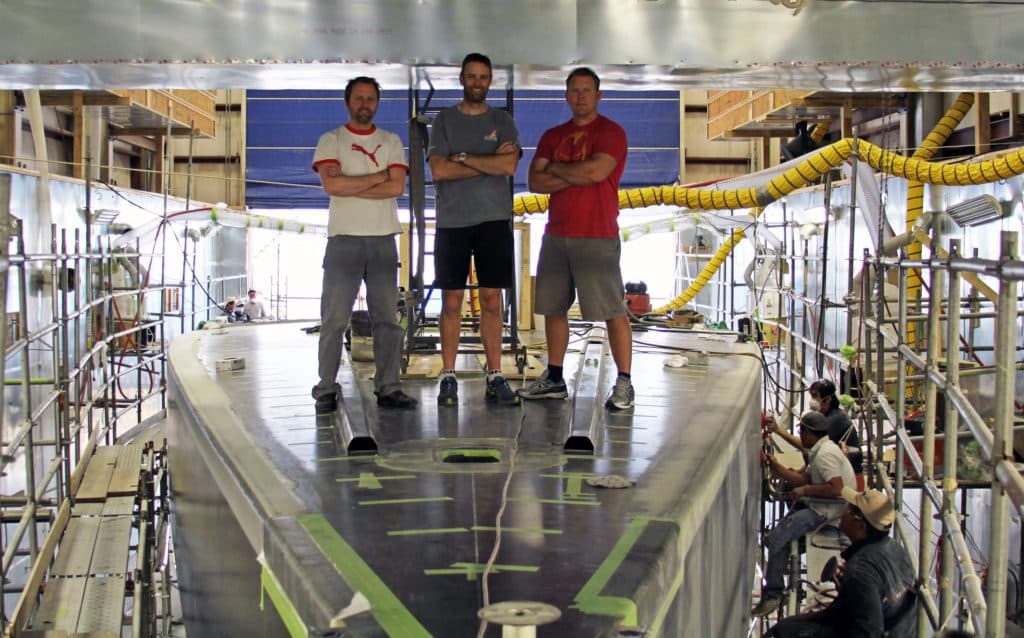
NewCube’s build managers

